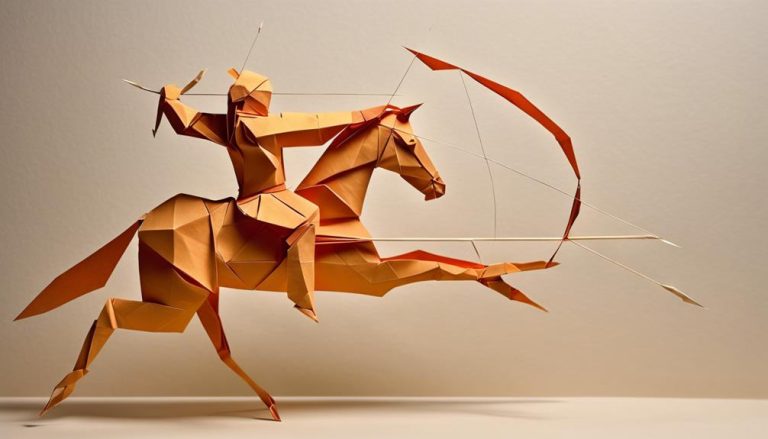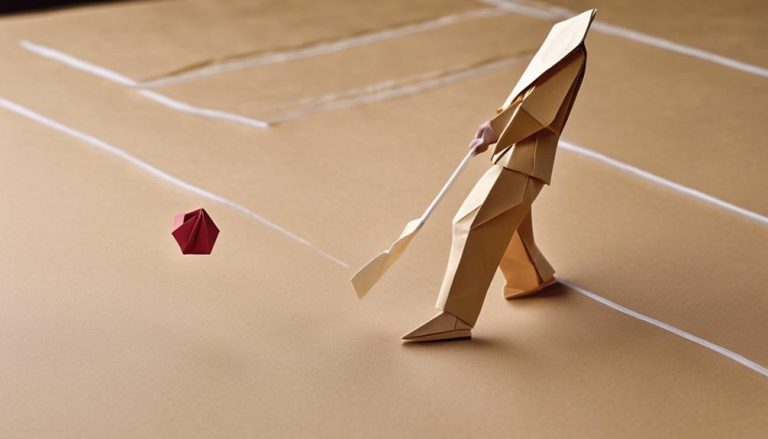General Rules of Unicycle Hockey
Unicycle hockey holds a unique charm, blending balance and ball-handling skills into a fast-paced game. But do you know the general rules that govern this intriguing sport? From equipment essentials to strategic gameplay, understanding the guidelines can elevate your performance on the court. Let's break down the key aspects of unicycle hockey to ensure you're fully prepared for the challenge ahead.
Equipment Requirements
To play Unicycle Hockey, you must ensure you have the appropriate equipment to participate safely and effectively. First and foremost, the size of your unicycle is crucial. The standard unicycle size for Unicycle Hockey is usually between 20 to 24 inches. A smaller wheel size offers better agility and maneuverability, while a larger wheel size provides more stability. Choose a size that suits your playing style and comfort level on the court.
Equally important is the protective gear you wear during games. Unicycle Hockey can be a fast-paced and dynamic sport, so wearing the right protective gear is vital. Make sure to invest in a good quality helmet to protect your head in case of falls or collisions. Additionally, knee and elbow pads are essential to prevent injuries when you inevitably take a tumble. Wrist guards can also provide support and protection for your wrists during intense gameplay.
Team Composition
When forming a team for Unicycle Hockey, it is crucial to consider the diverse skills and roles each player brings to the game. Skill balance and player roles are essential components that can make or break a team's performance on the unicycle hockey rink. To ensure success, it's vital to have a mix of players with varying abilities, including strong dribblers, accurate shooters, agile defenders, and strategic playmakers.
Position rotation and teamwork dynamics play a significant role in team composition. Encouraging players to switch positions during the game can help them develop a better understanding of different roles and foster a more cohesive team dynamic. This flexibility enables players to adapt to various game situations and challenges, ultimately enhancing the team's overall performance.
When assembling your unicycle hockey team, consider each player's strengths and weaknesses to create a well-rounded lineup. Assigning specific roles based on individual skills can maximize the team's potential. For example, placing skilled dribblers in offensive positions and strategic thinkers in defensive roles can capitalize on each player's strengths.
Game Duration
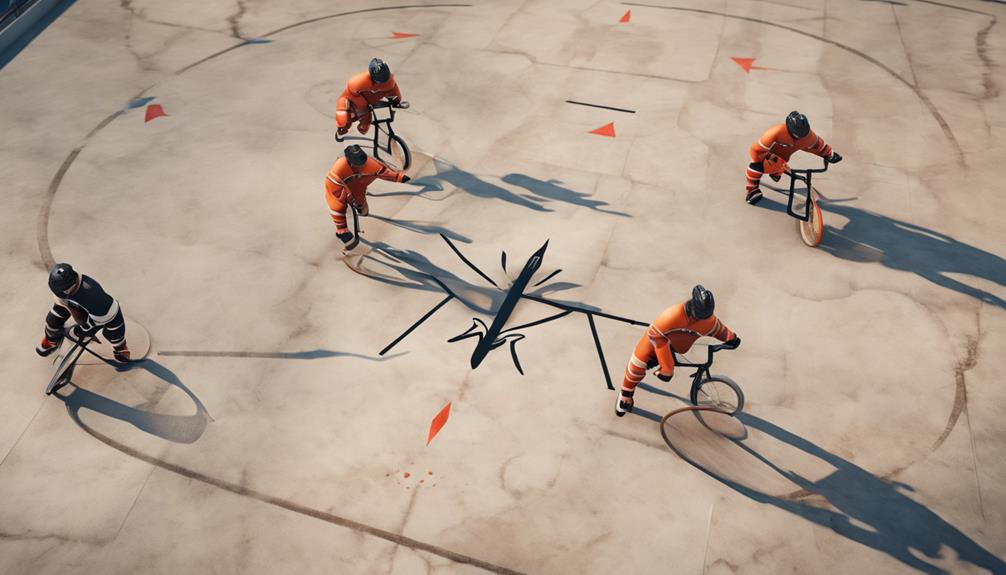
Considering the strategic elements of team composition in Unicycle Hockey, the game duration plays a crucial role in shaping the flow and intensity of each match. Time management is key in Unicycle Hockey as matches typically last for a specific duration, ensuring fair gameplay and allowing teams to showcase their skills within a set timeframe. However, game interruptions such as injuries or equipment malfunctions can affect the flow of the game and potentially impact player fatigue.
To give you a better understanding, here is a table outlining the standard game duration and overtime rules in Unicycle Hockey:
| Aspect | Details |
|---|---|
| Standard Game Time | 2 halves of 20 minutes each |
| Half-time Break | 5 minutes |
| Overtime Rules | Golden goal rule applies, first team to score wins |
Effective time management is crucial for teams to maintain their energy levels throughout the match and prevent player fatigue. Coaches and players need to strategize on when to push forward aggressively and when to focus on defensive play, considering the limited time available. Overtime periods, if needed, add an extra layer of excitement and challenge to the game, requiring teams to stay focused and maintain their competitive edge until the final goal is scored.
Scoring System
Let's talk about the points in unicycle hockey. Goals are essential as they determine the winners, with points awarded for each successful goal scored. Understanding how points are earned can help strategize gameplay and lead your team to victory.
Goals Determine Winners
In Unicycle Hockey, the scoring system operates on a simple premise: goals determine the winners of each match. When aiming for victory, consider implementing these winning strategies and offensive tactics:
- Team Coordination: Work together to create opportunities and outmaneuver the opponents.
- Fast Breaks: Utilize speed and agility to launch quick attacks, catching the defense off guard.
- Positional Play: Maintain strategic positions on the rink to control the flow of the game.
- Shot Accuracy: Focus on precision when taking shots to increase the likelihood of scoring.
- Defensive Transitions: Quickly switch from offense to defense to prevent counterattacks and maintain a strong defensive line.
Points for Each Goal
For each goal scored in Unicycle Hockey matches, teams are awarded a set number of points in accordance with the game's scoring system. Typically, a goal results in one point being added to the scoring team's total. This straightforward system keeps track of each team's progress throughout the game, creating a competitive and dynamic environment. When a goal is scored, the team often engages in a lively goal celebration, showcasing their teamwork and camaraderie. Goalies play a crucial role in preventing goals, employing various tactics to defend their team's net. Understanding the value of each goal not only adds excitement to the game but also highlights the importance of offensive and defensive strategies in Unicycle Hockey.
Foul and Penalty Rules
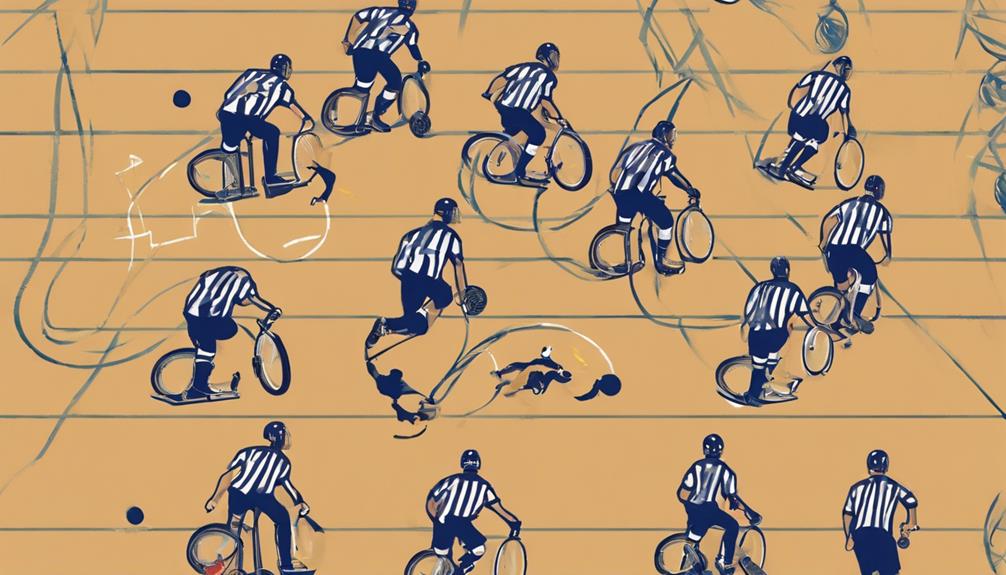
When a player commits a foul in unicycle hockey, it results in penalties being enforced according to the rules of the game. Understanding the foul and penalty rules is crucial for fair play and sportsmanship in unicycle hockey. Here are some key points to consider:
- Minor Penalties: Minor penalties are typically given for less severe infractions such as tripping an opponent or playing with a high stick. These penalties usually result in the player serving time in the penalty box for a short duration.
- Major Penalties: Major penalties are more serious and can be assessed for actions like checking from behind or fighting. Players receiving major penalties may face a longer time in the penalty box or even ejection from the game.
- Misconduct Penalties: Misconduct penalties are given for offenses like arguing with officials or using obscene language. These penalties often result in the player being removed from the game for a set period.
- Match Penalties: The most severe penalties in unicycle hockey, match penalties are assessed for dangerous plays or intent to injure. Players receiving a match penalty are ejected from the game and may face further disciplinary action.
- Referee Discretion: Referees have the authority to assess penalties based on the severity of the infraction and the context of the game. Their decisions are final and must be respected by all players.
Understanding and abiding by the foul and penalty rules is essential for maintaining a safe and enjoyable playing environment in unicycle hockey.
Substitution Regulations
To ensure smooth gameplay transitions and strategic adjustments, unicycle hockey teams employ a structured system for player substitutions during matches. Player rotation is essential in unicycle hockey to maintain team energy levels and adapt to the evolving dynamics of the game. When it comes to substitution regulations, understanding bench etiquette is crucial for every player.
Effective player rotation involves a balance between keeping key players on the field and providing opportunities for others to contribute. It ensures that fatigue is managed, and all team members feel involved in the game. Unicycle hockey teams often establish substitution patterns based on player positions, individual strengths, and game strategies. By rotating players strategically, teams can maintain a high level of performance throughout the match.
Bench etiquette plays a significant role in substitution regulations. Players waiting on the bench must be attentive to the game, ready to enter when called upon. It is essential to support teammates on the field actively. Encouraging communication between players on the bench and those playing helps in seamless transitions during substitutions. Additionally, maintaining a positive and engaged attitude while on the bench contributes to the overall team spirit and cohesion.
Game Strategies
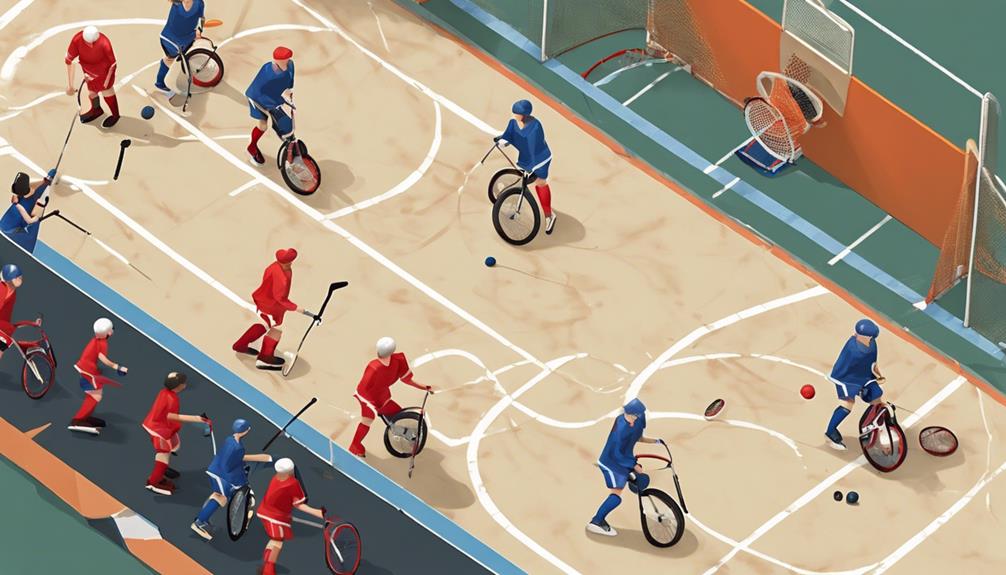
Crafting effective game strategies in unicycle hockey requires a keen understanding of your team's strengths and the ability to adapt to your opponents' tactics. To excel in this unique sport, you must master offensive tactics and defensive maneuvers to outmaneuver your rivals on the unicycle hockey court. Here are some key strategies to consider:
- Utilize Passing Plays: Quick and precise passes can disrupt the opponent's defense, creating scoring opportunities for your team. Work on communication and coordination to execute seamless passing plays.
- Employ Shooting Techniques: Develop your shooting skills to accurately aim for the goal while maintaining balance on your unicycle. Practice different shooting techniques to surprise the goalie and score crucial points.
- Maintain Defensive Formations: Solid defensive maneuvers are essential to thwart your opponents' attacks. Focus on positioning, timing, and teamwork to create a formidable defense that can stop any offensive play.
- Counterattack Swiftly: Be prepared to transition from defense to offense swiftly. Capitalize on turnovers to launch rapid counterattacks and catch the opposing team off guard.
- Adapt to Opponents: Study your opponents' strategies and adapt your game plan accordingly. Be flexible in your approach, identifying weaknesses to exploit and adjusting your tactics as needed.
Frequently Asked Questions
Are There Any Specific Rules Regarding the Size or Type of Unicycle That Can Be Used in Unicycle Hockey?
In unicycle hockey, you can use various types of unicycles, but they must be suitable for the game. Make sure your unicycle is sturdy, maneuverable, and equipped with protective gear for safety and performance on the court.
Can Players Switch Between Using a Unicycle and Playing on Foot During a Game?
During a game of unicycle hockey, players cannot switch between using a unicycle and playing on foot. This rule adds a layer of challenge to the game, requiring strategic tactics for player substitutions and emphasizing the importance of equipment requirements and safety precautions.
Are There Any Restrictions on the Type of Protective Gear That Players Must Wear During a Game?
When playing Unicycle Hockey, you must wear appropriate protective gear like helmets, knee pads, and gloves for safety. Following equipment requirements is crucial to prevent injuries and ensure fair play. Respect game etiquette and player responsibilities.
How Are Disputes or Disagreements Between Players or Teams Typically Resolved During a Game?
To resolve disputes during a game in unicycle hockey, players rely on fair play and good sportsmanship. By communicating respectfully and adhering to game etiquette, teams can resolve disagreements swiftly, ensuring a fun and competitive atmosphere.
Are There Any Specific Rules or Guidelines for Spectators Watching a Unicycle Hockey Match?
When watching a unicycle hockey match, remember to respect the players and other spectators. Cheer them on, but avoid disrupting the game. Appreciate the unicycle skills on display and observe the game strategies and team dynamics unfolding before you.




